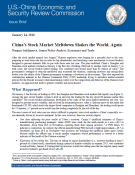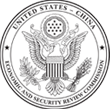
After the stock market turmoil last August, Chinese regulators were hoping for a peaceful start to the year, preparing to wind down the ban on sales for big shareholders and launching a new mechanism (a circuit breaker) designed to prevent dramatic falls on par with those seen last year. The plan backfired. China’s Shanghai and Shenzhen stock markets crashed on January 4, the first day of trading, followed by another crash on January 7; in both cases, the circuit breaker halted trading. The combined rout erased more than $1 trillion of value. The government’s attempts to stem the meltdown only worsened the situation, confusing investors and raising fresh doubts over the ability of the Chinese government to manage a slowdown in the economy. They also exposed the contradiction inherent in the Chinese Communist Party (CCP) leadership trying to introduce market-oriented policies for the broader economy while maintaining control over the composition and behavior of the Chinese stock markets—an approach that leads to greater volatility and moral hazard.
